You’ve installed motion sensors expecting reliable security coverage, but you’re discovering gaps where activity goes completely undetected. Whether it’s a package thief who somehow avoided triggering alerts or family members moving through supposedly monitored areas without generating notifications, these detection failures stem from specific range-related issues that most homeowners overlook. The solution isn’t replacing your equipment—it’s understanding how detection zones actually work and what’s secretly undermining your sensor’s effectiveness.
Understanding Motion Sensor Detection Technology
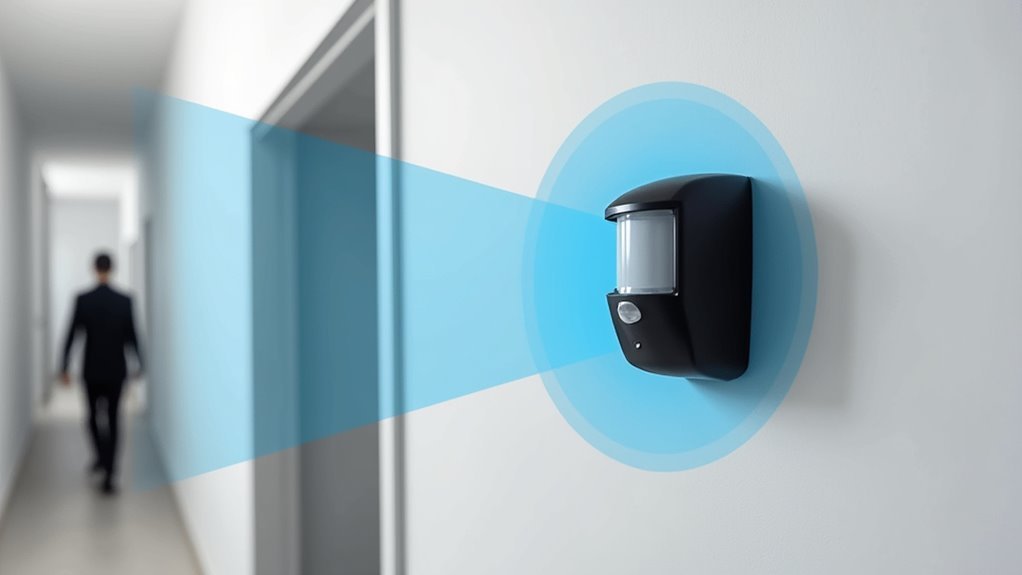
When you’re selecting a motion sensor for your home or business, you’ll encounter two primary detection technologies that form the backbone of modern security systems.
Optical-based sensors detect movement through changes in light patterns, while Passive Infrared (PIR) sensors sense heat signatures from living beings. Your motion detection system’s effectiveness depends largely on understanding these technologies’ strengths and limitations.
Each sensor type offers different sensitivity levels that you can adjust to optimize performance.
PIR sensors excel at detecting warm-blooded intruders but may struggle with temperature fluctuations.
Optical sensors provide reliable detection in stable lighting conditions but can trigger false alarms from shadows or light changes.
You’ll need to evaluate your specific environment when choosing between these technologies to guarantee your sensor delivers accurate, consistent detection for your security needs.
Common Causes of Motion Detection Failures
Even with advanced detection technology, your motion sensors can fail to register activity due to several common installation and configuration issues.
Poor camera placement at incorrect heights or angles greatly reduces your device’s field of view and detection capabilities. You’ll want to mount sensors 7-10 feet high with a 30° downward angle for ideal coverage.
Mount motion sensors 7-10 feet high with a 30-degree downward angle to maximize detection coverage and eliminate blind spots.
Incorrect sensitivity settings prevent your system from capturing relevant movements effectively.
Environmental obstructions like plants or furniture block the sensor’s line of sight, creating blind spots in monitored areas. Low light conditions considerably impair your camera’s ability to detect motion, requiring proper lighting or adjusted camera settings for night mode operation.
Additionally, inconsistent Wi-Fi connectivity disrupts communication between sensors and your alarm system, causing missed alerts.
Optimal Camera Positioning and Height Requirements
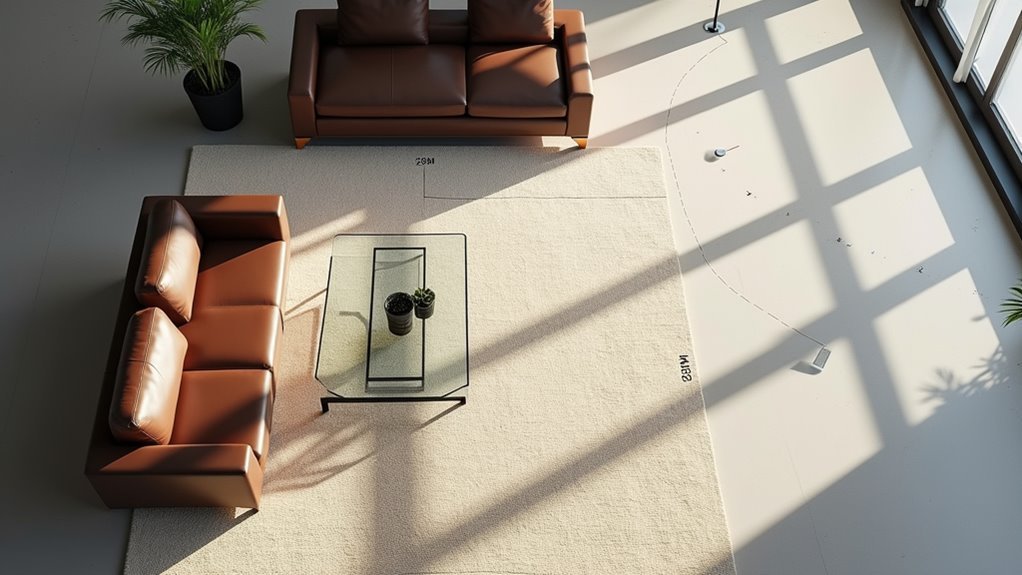
Proper camera positioning dramatically improves your motion sensor’s accuracy and reduces detection failures.
You’ll achieve the best results by mounting your camera at the right height and angle for ideal coverage.
For ideal camera positioning, follow these essential guidelines:
- Mount at 7-10 feet high with a 30° downward angle to maximize your motion detection feature’s effectiveness
- Position at doorways and high-traffic areas where you’re most likely to capture meaningful activity
- Avoid placing behind glass, plastic, or mirrors since these materials obstruct motion sensors and reduce performance
- Trim nearby vegetation that could block your camera’s field of vision and interfere with detection
Set up activity zones in your camera settings to focus on relevant movements, which reduces false alarms while improving overall detection accuracy.
Creating Effective Activity Zones
You’ll need to strategically place your activity zones to cover the most critical areas where meaningful motion occurs, such as doorways, walkways, and entry points.
By filtering out unnecessary motion from areas like busy streets or swaying vegetation, you’ll greatly reduce false alerts while maintaining security coverage.
Adjusting your zone boundaries to match the specific dimensions of these high-priority areas guarantees you’re capturing relevant activity without missing important movements.
Zone Placement Strategy
Strategic placement of activity zones can make the difference between a motion sensor system that constantly triggers false alarms and one that accurately detects genuine security threats.
You’ll need to focus on areas where meaningful activity occurs while ensuring your camera is positioned at the ideal 7-10 ft height with a slight downward angle.
Your Activity Zone configuration should prioritize strategic locations that capture relevant movements:
- Focus on entry points – Place detection zones at doors, gates, and pathways where intruders would naturally enter
- Avoid high-traffic areas – Skip zones near busy streets or areas with constant movement from pets or vegetation
- Size zones appropriately – Make them large enough for full person detection but not so big they become ineffective
- Review and adjust regularly – Monitor patterns and refine zones based on actual activity observations
Filtering Unnecessary Motion
Even with perfectly positioned zones, your motion sensor will still capture movements you don’t want to monitor.
You’ll need to fine-tune your activity zones to filter out consistent, non-threatening motion that triggers false alarms.
Configure zones to exclude high-traffic areas like sidewalks, roadways, or swaying trees that create constant movement. Focus your motion detection on entry points, valuable areas, and spaces where meaningful activity occurs.
Size your zones appropriately—too large captures irrelevant motion, while too small misses important events.
Regularly review detection patterns and adjust zone boundaries based on what you observe. Remove areas generating frequent unnecessary alerts while ensuring critical spaces remain covered.
This targeted approach enhances sensor effectiveness by prioritizing significant movements over background noise, delivering reliable security monitoring.
Adjusting Zone Boundaries
Once you’ve identified problematic areas generating false alerts, you can begin adjusting your zone boundaries to create more effective activity zones.
Access your camera settings and navigate to Smart Detection to customize Activity Zones according to your surveillance needs. Proper configuration enhances motion detection accuracy while minimizing unnecessary alerts.
- Size zones appropriately – Make them large enough to capture relevant movements but exclude areas with frequent non-target activity like moving trees or passing vehicles.
- Focus on entry points – Prioritize doorways, gates, and pathways where people typically enter or leave your property.
- Review performance regularly – Monitor alert patterns and adjust boundaries based on observed activity over time.
- Test different configurations – Experiment with zone shapes and positions to find ideal settings for your specific environment.
Adjusting Motion Sensitivity Settings
Three key factors determine your motion sensor’s effectiveness: sensitivity level, environmental conditions, and activity patterns in the monitored area.
You’ll need to fine-tune your motion sensitivity settings to balance capturing important movements while preventing false alerts. When you increase sensitivity, your sensor can detect subtle movements and enhance performance in high-activity zones. However, setting it too high triggers unnecessary notifications from minor disturbances like swaying branches or passing shadows.
Start by adjusting sensitivity based on your specific monitoring needs. If you’re missing critical activity, gradually increase the setting. Conversely, if you’re receiving too many false notifications, lower the sensitivity.
Adjust motion sensitivity gradually based on your monitoring requirements—increase if missing activity, decrease if getting excessive false alerts.
Confirm notifications are enabled in your app to monitor performance changes. Regular adjustments based on observed patterns optimize your camera’s detection capabilities while accounting for lighting changes and environmental obstacles.
Eliminating Physical Obstructions
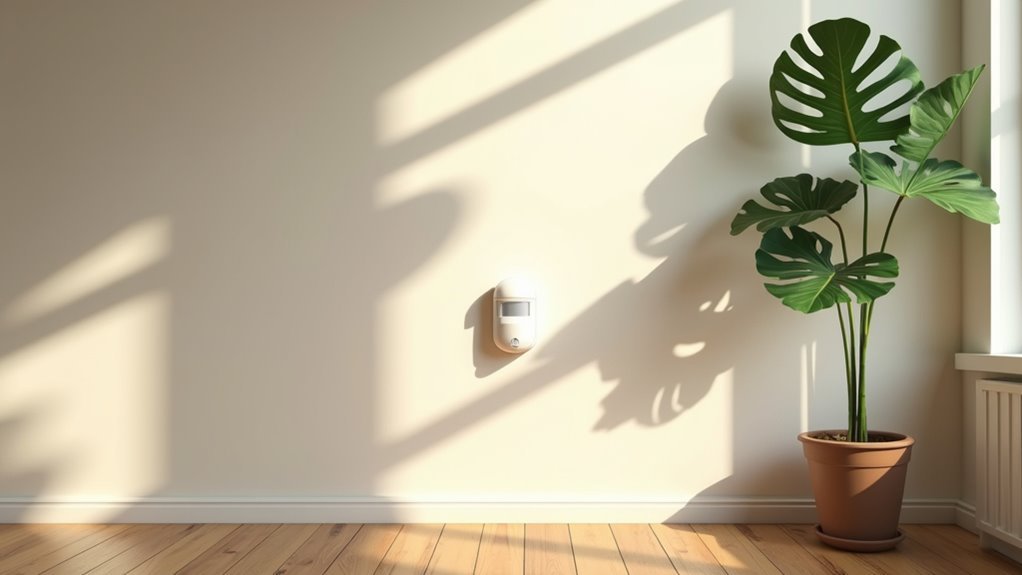
Physical obstructions between your motion sensor and the area you’re monitoring can dramatically reduce detection accuracy and create blind spots in your security coverage.
Even minor barriers can interfere with your sensor’s line of sight, causing missed activity within the detection zone.
To maximize your motion sensor’s effectiveness, you’ll need to address these common obstruction issues:
- Remove indoor barriers like furniture, decorations, or wall hangings that block the sensor’s view
- Trim outdoor vegetation including trees and shrubs that can grow into the detection zone
- Install sensors 7-10 feet high with a 30° downward angle to minimize obstruction impact
- Avoid glass or mirror placement as these surfaces reflect light and obscure movement detection
Your sensor’s field of view must remain completely unobstructed for ideal performance.
Improving Low Light Performance
When ambient lighting drops, motion sensors frequently fail to detect movement with the same reliability they demonstrate during daylight hours.
Motion sensors lose detection accuracy when lighting conditions deteriorate, creating reliability gaps between day and night performance.
You’ll need to enable all detection types in your camera settings to maximize accuracy during nighttime conditions. Configure night mode settings properly, as incorrect configurations lead to missed alerts when visibility decreases.
Consider adding external lighting to areas you’re monitoring. Strategic lighting considerably enhances camera visibility and improves motion detection effectiveness.
Position your cameras in naturally well-lit locations whenever possible, as this dramatically reduces missed activity during dark hours.
Monitor your motion sensors regularly under varying lighting conditions. This helps you identify detection weaknesses and make timely adjustments to low light settings for peak performance.
Strengthening Network Connectivity
Your camera’s motion detection reliability depends heavily on maintaining a strong, stable Wi-Fi connection throughout your home.
You’ll want to optimize your Wi-Fi signal strength by ensuring your camera isn’t too far from your router, as distance greatly impacts performance.
Consider your router’s placement strategy carefully—moving it to a central location or adding a Wi-Fi extender can eliminate dead zones that cause missed notifications.
Wi-Fi Signal Optimization
Most motion sensors rely on consistent Wi-Fi connectivity to deliver real-time alerts and accurate activity detection.
When you’re dealing with an unstable network, your sensors can’t communicate effectively with your security system, resulting in missed events and false alarms.
To optimize your Wi-Fi signal for motion sensors:
- Position your router centrally to minimize distance and obstructions between devices
- Install a Wi-Fi extender to boost coverage in areas where sensors are located far from your main router
- Monitor network performance regularly to identify interference from competing devices
- Update router firmware and switch to less congested channels for improved stability
Strong network connection guarantees your motion sensors function reliably, keeping your home security system responsive when you need it most.
Router Placement Strategy
Strategic router placement forms the foundation of reliable motion sensor connectivity throughout your home.
You’ll want to position your router centrally to maximize coverage area and minimize signal distance to your motion sensors. Elevate it 3-5 feet above ground level to reduce physical obstructions that weaken Wi-Fi signal strength.
Keep your router away from large metal objects, appliances, and electronic devices that cause interference. These obstacles greatly impact signal quality and can cause your motion sensors to miss critical activity.
If you’re dealing with multiple floors or thick walls, consider installing a Wi-Fi extender or mesh network system to eliminate dead zones.
Regular monitoring of signal strength in sensor locations helps you identify connectivity issues before they affect performance and reliability.
Firmware Updates and Software Maintenance
While motion sensors provide excellent security capabilities out of the box, they’ll only maintain peak performance through consistent firmware updates and software maintenance.
Outdated software can greatly compromise your system’s reliability, causing missed alerts and reduced detection capabilities.
Regular updates guarantee your cameras stay compatible with evolving technology and environmental changes. You should frequently check your camera settings for available updates, as manufacturers often release fixes for connectivity issues and detection accuracy problems.
- Check for firmware updates monthly through your device’s admin panel
- Enable automatic update notifications to stay informed about new releases
- Review camera settings after each update to optimize detection zones
- Document update dates to track your maintenance schedule and troubleshoot issues
Environmental Factor Considerations
When you install motion sensors, you’ll need to account for environmental factors that can notably impact their performance.
Weather conditions like rain and snow can interfere with outdoor sensors, while physical obstructions such as furniture or plants can block detection zones.
You must also consider how lighting conditions affect sensor accuracy, as many devices struggle in low-light situations.
Weather Impact Detection
Environmental conditions greatly influence your motion sensor’s ability to detect and accurately identify activity around your property. Weather conditions like heavy rain, snow, or fog can obstruct your camera’s field of view, markedly reducing detection accuracy.
Environmental factors such as extreme temperatures and high humidity affect sensor performance, creating inconsistent readings that compromise your security system’s reliability.
- Wind interference – Moving branches and debris trigger false alarms while potentially masking genuine threats
- Temperature extremes – Low temperatures cause hardware malfunctions, making sensors operate intermittently or go offline completely
- Storm-related lighting changes – Overcast skies and storms diminish night vision effectiveness, reducing movement detection in low-light conditions
- Moisture impact – High humidity levels interfere with sensor calibration, leading to unreliable motion detection capabilities
Physical Obstruction Issues
Beyond weather-related challenges, physical barriers around your property create equally problematic detection issues for motion sensors.
Physical obstructions like walls, furniture, and plants block your sensor’s line of sight, preventing it from detecting movement in essential areas of your monitored area. You’ll experience significant blind spots when sensors can’t see past these barriers.
Installing sensors at 7-10 feet height and angling them downward at 30° helps minimize these obstructions while optimizing coverage.
Moving objects within the detection zone, such as swaying branches, can trigger false alerts or mask real threats. Additionally, avoid placing sensors behind glass or near heat sources, as these locations cause unreliable performance and false alarms that compromise your security system’s effectiveness.
Lighting Condition Effects
Although motion sensors excel in ideal conditions, lighting variations throughout the day pose substantial challenges to their detection capabilities. Poor lighting conditions can dramatically reduce your sensor’s accuracy, causing missed alerts when you need them most.
Your motion detection system faces several lighting-related obstacles:
- Dawn and dusk fluctuations create shadows and reflections that trigger false positives or negatives.
- Nighttime performance suffers when night vision settings aren’t properly configured for your environment.
- Low-light environments make it difficult for sensors to distinguish between actual motion and environmental noise.
- Inadequate illumination forces sensors to work harder, often missing critical activity during dark hours.
To maximize effectiveness, you’ll want to enable all detection types in your camera settings and consider adding supplementary lighting in high-priority areas.
Testing and Calibrating Sensor Performance
When your motion sensor fails to detect movement or triggers false alarms, you’ll need to systematically test and calibrate its performance to restore peak functionality.
Start by swapping locations between a working sensor and the problematic one to determine if the issue stems from power supply or positioning.
Conduct thorough testing under various environmental conditions, including different lighting scenarios and weather patterns. This reveals how external factors affect detection capabilities.
Regularly calibrate sensitivity settings to optimize detection range while minimizing false alarms. Fine-tune responsiveness to capture relevant movements without excessive sensitivity.
Verify proper installation height between 7-10 feet with appropriate angles for maximum coverage.
Configure activity zones to focus on specific areas, helping identify genuine movements while reducing unnecessary alerts and improving overall sensor performance efficiency.
Troubleshooting Offline Motion Sensors
Since offline motion sensors often signal communication breakdowns between the device and your alarm panel, you’ll need to identify whether signal interference or poor connectivity is causing the disruption.
When your camera not detecting motion or security camera not picking up movement, the sensor itself might’ve lost connection rather than having detection type problems.
Power cycling offers the quickest fix—remove and reinsert batteries to reset connectivity. If multiple sensors fail simultaneously, swap a working device with the problematic one to determine whether location or hardware causes the issue.
- Monitor supervision messages to track offline patterns and frequency
- Position sensors away from large metal objects that block signals
- Maintain unobstructed line of sight between sensors and alarm panels
- Check surrounding environment for new interference sources
Advanced Motion Detection Features
You’ll find that modern motion sensors go far beyond basic movement detection with AI-powered technology that can distinguish between different types of activity and even identify specific individuals.
These smart systems let you configure custom zones within your monitoring area, so you’re only alerted to motion that matters in the spaces you’ve designated.
With features like BionicMind™ AI differentiating between family members and strangers, you can eliminate false alarms while maintaining extensive security coverage.
AI-Powered Detection Technology
While traditional motion sensors rely on basic movement triggers, AI-powered detection technology revolutionizes home security by intelligently analyzing what’s actually happening in your space.
Technologies like eufy’s BionicMind™ use advanced algorithms to distinguish between family members and strangers, minimizing false alerts while maximizing protection.
AI-enhanced motion detection offers several key advantages:
- Smart filtering – Automatically ignores non-threatening motion from pets or moving objects
- Customizable sensitivity settings – Adjust detection ranges to match your specific environment perfectly
- Enhanced identification – Dual-camera systems provide thorough coverage with zoom capabilities up to 50 feet
- Real-time analysis – Improved response times through instant movement pattern recognition
This intelligent approach guarantees you’ll receive timely, relevant alerts without the constant interruptions that plague traditional motion sensors.
Smart Zone Configuration
Beyond basic motion detection lies Smart Zone Configuration, a powerful feature that transforms your security camera into a precision monitoring tool. You can specify Activity Zones that filter unnecessary movements and focus detection capabilities on relevant areas, greatly enhancing accuracy.
Access your Camera Settings and adjust Smart Detection options to eliminate alerts from areas with frequent non-significant motion like passing cars or swaying trees.
You’ll want to regularly review and adjust configured zones based on observed activity patterns to maintain ideal effectiveness. The correct sizing and positioning of Activity Zones considerably impacts your camera’s ability to capture relevant movements.
Smart Zone Configuration reduces false alerts while improving efficiency by focusing resources on critical surveillance areas, ensuring more accurate monitoring.
Recommended Motion Detection Cameras
When selecting a motion detection camera, the eufyCam S330 and eufy SoloCam S340 stand out as top-tier options that deliver exceptional performance and reliability.
These security cameras excel at minimizing false alarms through advanced features and intelligent detection capabilities.
The eufyCam S330’s BionicMind™ AI distinguishes between family members and strangers, while its 4K UHD resolution captures sharp detail.
The SoloCam S340 offers 3K resolution with 8× zoom for detailed identification at 50 feet.
Key features that enhance motion detection accuracy:
- Activity zones let you customize monitoring areas
- Adjustable sensitivity settings reduce unnecessary alerts
- 360° surveillance eliminates blind spots (SoloCam S340)
- Solar-powered designs guarantee continuous operation
Both models provide reliable monitoring without the interruptions that plague traditional motion sensors.
Frequently Asked Questions
What Can Interfere With Motion Sensors?
You’ll find obstructions, extreme weather, low light, wireless interference, and improper placement can disrupt your motion sensors. Furniture, plants, temperature changes, humidity, competing electronics, and incorrect mounting angles all affect their detection accuracy considerably.
Why Do Motion Sensors Not Work for Me?
Your motion sensors aren’t working because you’ve likely placed them incorrectly, set sensitivity wrong, have obstructions blocking detection, or you’re experiencing connectivity issues that prevent proper communication.
Why Does My Ring Miss Some Motion?
Your Ring camera’s missing motion because you’ve got incorrect sensitivity settings, poor placement, or obstructions blocking the view. You’ll need to adjust settings, reposition the camera, and guarantee proper lighting for better detection.
Why Is My Motion Detection Not Working?
Your motion detection isn’t working because you’ve likely got improper camera placement, incorrect sensitivity settings, obstructions blocking the view, poor lighting conditions, or outdated firmware that needs updating.

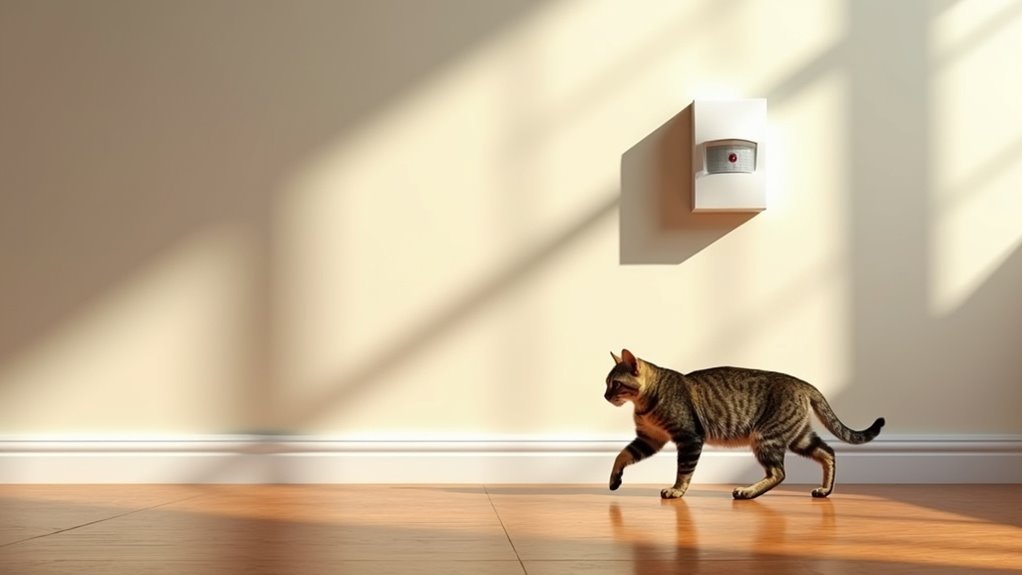


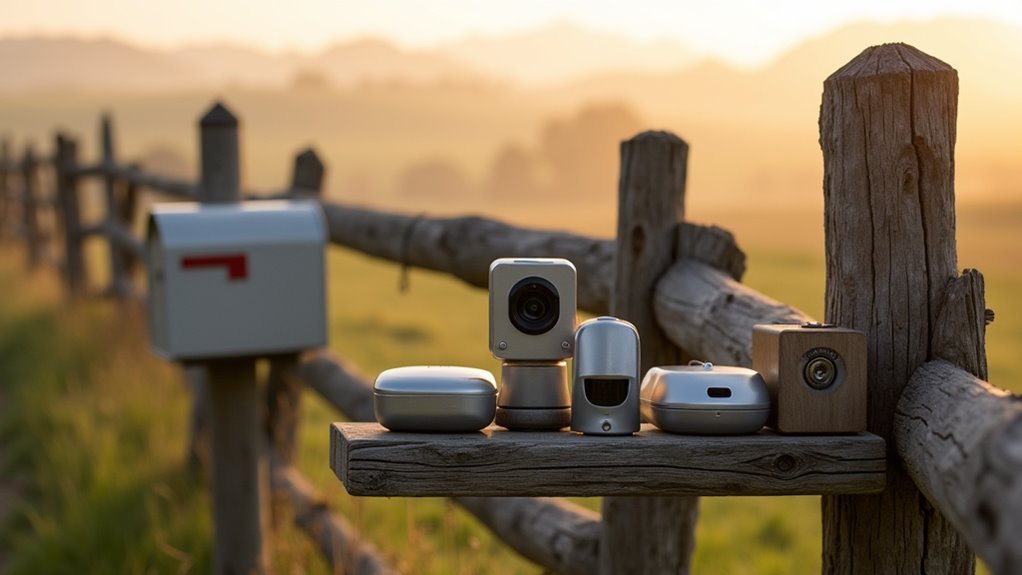
Leave a Reply